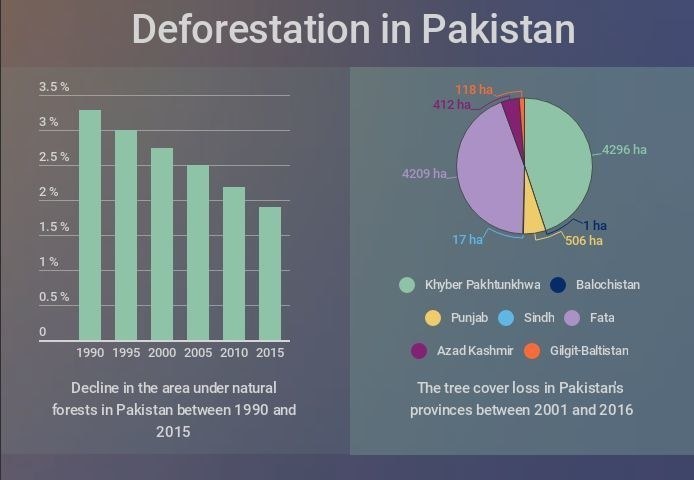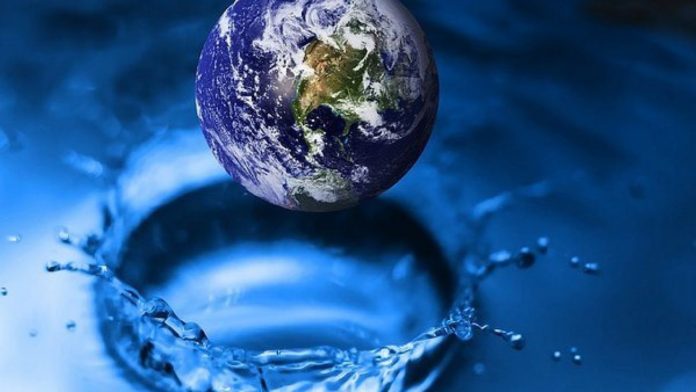“Why are you wasting water?”, I asked a man who was washing the blood of a sacrificial animal near his home’s entrance. “Why would you care?”, I was stunned by such a wry but predictable counter question. I replied, “Water is far more precious than we usually thought, and it’s rapidly depleting. Soon, we might run out of subsoil water if we didn’t care”. He, obviously, was unimpressed by this. “It’s my house, my well and my water. I’d use the way I would want; this shouldn’t bother anyone. There’s plenty of water in the Earth and that’s not going to end!”
There are many like him who have no idea of what would happen to water in Pakistan in the next ten years or so. Rachel Roberts, of the Daily Independent compiled a report about the looming water scarcity in Pakistan. The report was published on 15 September 2017 in the Independent. It truly is a wakeup call for everyone here. Roberts argues that by 2025 Pakistan would be in a perilous water scarcity situation where people would find it hard to have water for human consumption let alone agricultural use. She posits that Pakistan crossed the ‘water stress line’ in 1990 and the ‘water scarcity line’ in 2005. Subsoil water reservoirs have sharply depleted due to exceeding overuse during 1980s and 1990s and water re-supply was insufficient to fill those reservoirs back again! In 1980s one could dig a well in Lahore for about 20-40 feet and get plenty of water; now drilling down to 800 feet may not get you enough of it! Pakistan’s nearly total dependence on Indus water makes it more vulnerable to water scarcity as the levels of rain water have been steadily declining. The Indus Basin aquifer has already crossed the sustainability tipping point – it means more water is being extracted than replaced. The water table in Pakistan is speedily getting lowered because the ‘single source dependence’ for agriculture and other domestic uses has almost spent the groundwater we had. Farmers who grew only one crop a year now deal with 2-3 crops a year, this requires extensive water for irrigation; and the major source for it comes from the tube-wells, especially in Punjab. Since no major effort has been done to increase number of dams, therefore, farmers have no choice but to dig more tube-wells and make use of the groundwater reservoir. If this trend continues the report suggests Pakistan will have irreversible water crises within next 10-15 years.
In this article three main factors which directly or indirectly affect water depletion are discussed, these are: 1) absence of water policy, 2) deforestation and 3) population growth. There has hardly been a ‘water policy’ in Pakistan which could have guided the actions on use of subsoil water and dams construction. Despite the fact that we have the fourth highest rate of water use in the world, we have failed to formulize a pragmatic water policy. Everyone who builds a home or grows plants or crops can dig a wells and drill for bore-water with absolute impunity. People consider the groundwater to be an ‘infinite natural resource’ and inalienable right of anyone in Pakistan to get it through drilling or digging. This incredibly high water consumption rate could just show the amount of water we might be wasting! Absence of a policy on natural gas has cost us a great deal as the methane reserves finished sooner than we thought, likewise, water could just be another commodity we would be struggling to find as it exhausts swiftly. A water policy, which could regulate use of water for domestic, agricultural and power generation needs to be formulated. Significance of water and its resources being shrunk must be made part of education. Water policy should also set the billing procedures and usage mechanism. In some European countries, water meters are placed at the drainage of every home, factory and organizations’ buildings. There are strict penalties on wastage of water. International Commission on Large Dams (ICOLD) defines a large dam that has “a height of 15 m or more from the slowest foundation to the crest or a dam between 5-15 m impounding more than 3 million cubic meters of water”. According to this definition of ICOLD, Pakistan has a total of 150 dams/reservoirs but not all of these store water as per requirement. The number of dams in Pakistan is critically less whereas in India there are over 4200 dams and in China the number of dams exceeds 22000. Absence of water policy has, in fact, inhibited any channelized and focused progress towards dams building.

The second vital factor that contributes towards water depletion is deforestation. Pakistan’s forests are under stress as well as their diminution continues unabated at a rate of 1% annually. According to World Bank data, Pakistan’s forests reduced from 3.3% (1990) to 1.9% (2015). Already with a very insignificant forest cover Pakistan does not seem to be making any headway in increasing the forests or framing a policy to stop the deforestation. Pakistan Forest Department believes that “urbanization, industrialization and business are the major reasons of deforestation”. Calling deforestation an “ecological trauma”, the Forest Department argues that “[deforestation directly] resulted in global warming, land sliding, flooding, massive erosion and ecological destruction”. According to the University of Leeds and the Centre for Ecology and Hydrology, England, “deforestation reduces the natural recycling of moisture from soils, through vegetation, and into the atmosphere, from where it returns as rainfall. When forests are replaced by pasture or crops, this water recycling process changes, which leads to reduced atmospheric humidity and potentially suppressing precipitation”. A direct effect of massive deforestation is the rise in average environmental temperatures, which directly results in melting of glaciers and consequently the sea level will rise causing the submersion of coastal areas. J. Schewe and A. Levermann, in their work ‘A Statistically Predictive Model for Future Monsoon Failure in India’ (2012), predict that “the increasing temperature in the late 21st century and early 22nd century will cause frequent changes and shifts to the monsoon precipitation up to 70% below normal levels”.
The third factor which figures prominently in the looming water crises is Pakistan’s explosive population growth. This population rate is a ‘ticking bomb’ and this alone would hasten the water crises if not brought under control on an emergency basis. Recent population, officially declared by the government, is in excess of 207 million people! Since 1947, we’ve been adding 2.5 million people per year to our population numbers very consistently and if the trend goes on unnoticed, we would be touching the staggering 300 million figure by 2050! This growth rate is way too high if compared with India (1.2%), China (0.5%) and Bangladesh (1.2%). Corresponding increase in per capita water storage capacity did not increase and the figure is extremely low i.e. 136 cubic meter. This looks way too bleak if compared with, for instance, Australia, which has 5000 cubic meter per capita storage capacity. This will almost be a nightmare in the country with shrinking space, depleting water and incredibly high cost of energy. As we talk of the ‘water policy’, there must also be a ‘child policy’. If this is not thought now then we shall, very likely, face irremediable water crises in the times to come.
With less rains and depleting groundwater, Pakistan will find itself in troubling situation to provide water for even drinking purposes. This is an alarming situation and calls for measures that we might never have imagined before. The first and foremost is a need to create awareness among the people of Pakistan about the price that we might have to pay if we don’t realize the preciousness of water today. This could start from a school-level education to university research studies to general awareness campaigns/programs. Subsoil water use needs to be regulated, reported and monitored. We are running short on dams, and in the monsoon, a great deal of floodwater is lost to the Arabian Sea as we don’t have proper storage facilities. Mushroom growth of housing societies, urbanization and farming which consume the forest cover or natural habitat needs to be stopped through a strict policy forbidding deforestation and encouraging tree plantation. Population growth must be brought under check. The explosive growth rate of 2.1% will lead to a future replete with water scarcity problems having no solution. It’s time we took immediate steps to address the issues of water scarcity, climate change and population explosion. Water wars, droughts and rising temperatures – which were once considered as things of a distant future are now unarguable realities, for which we all need to be braced up for. The time to act is now.




